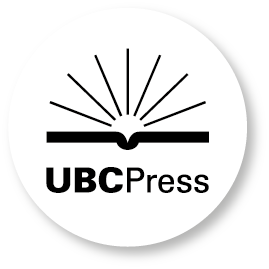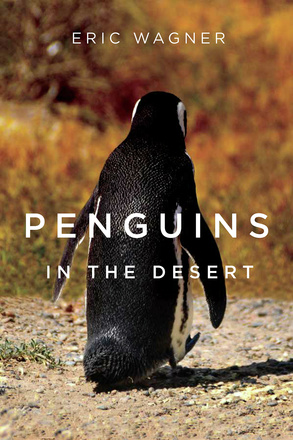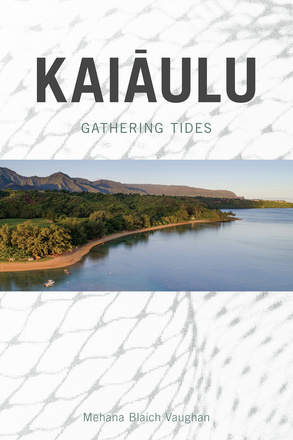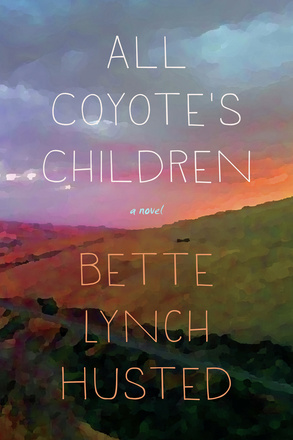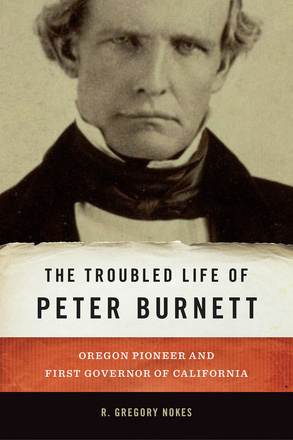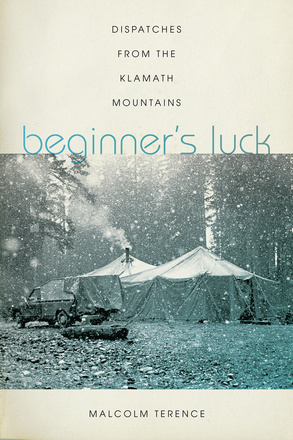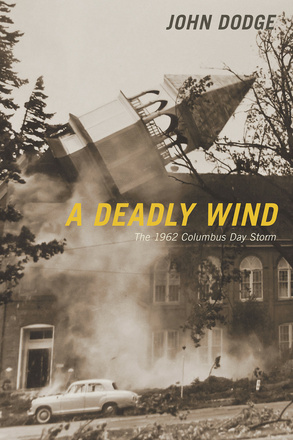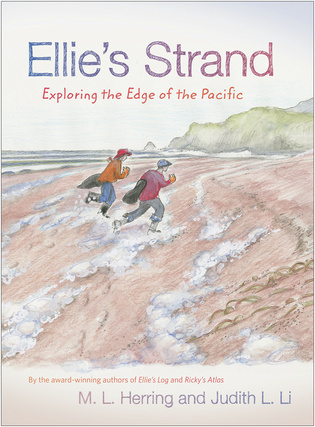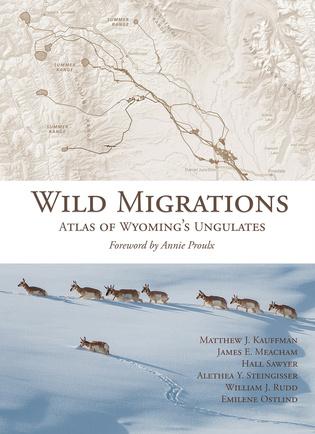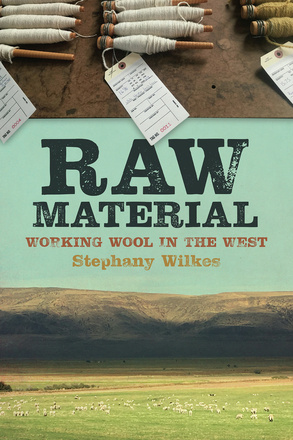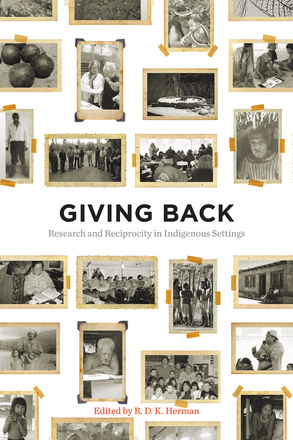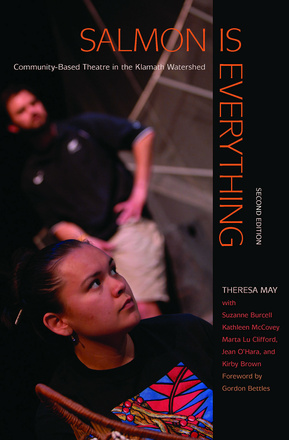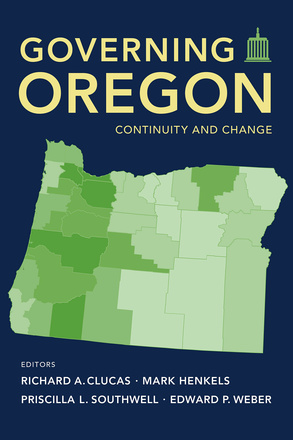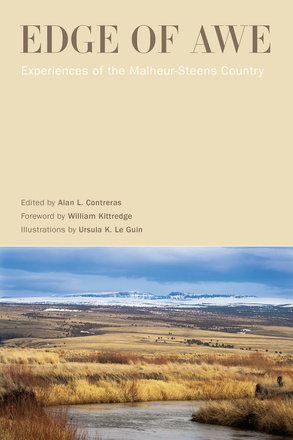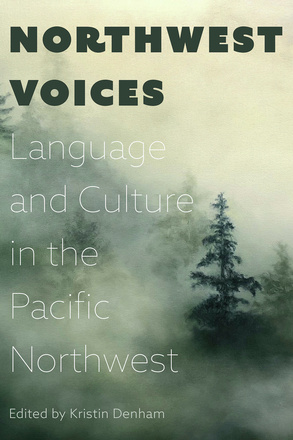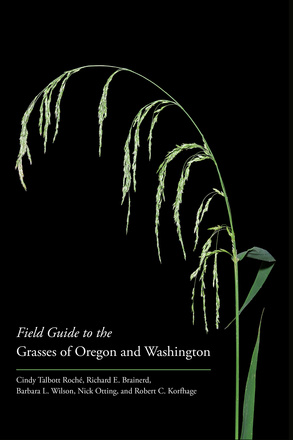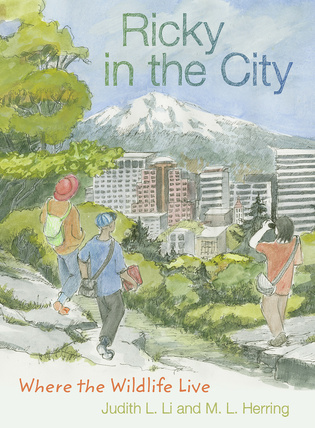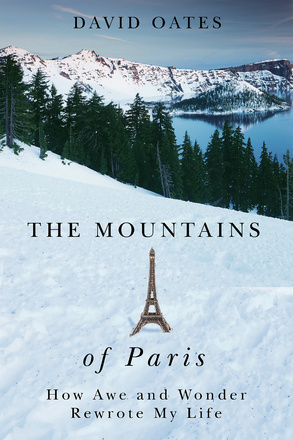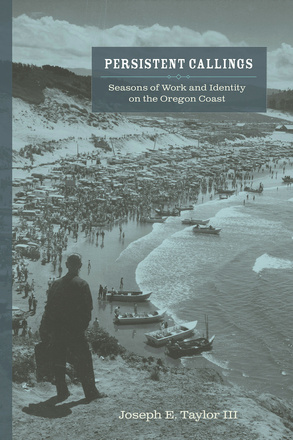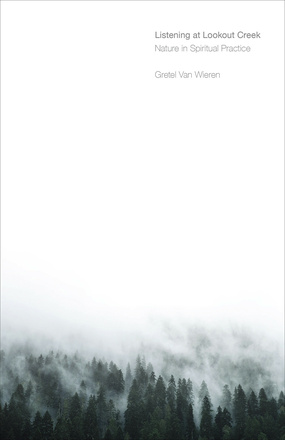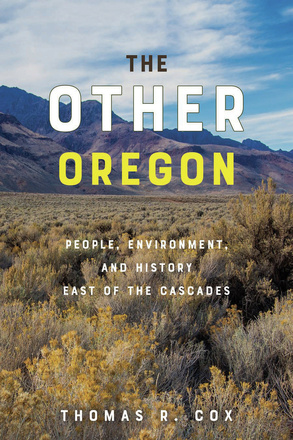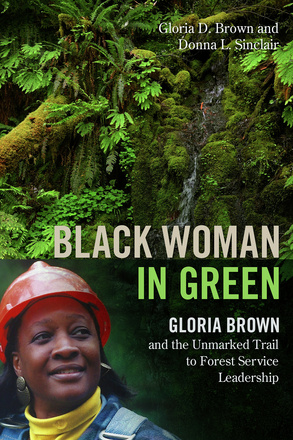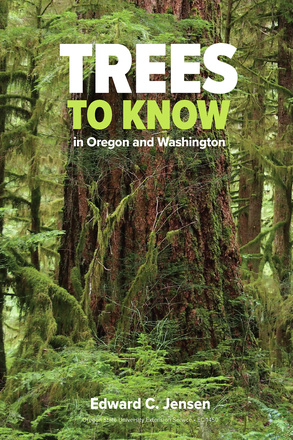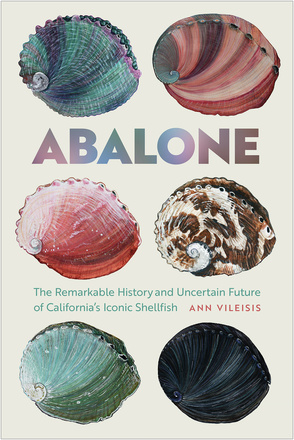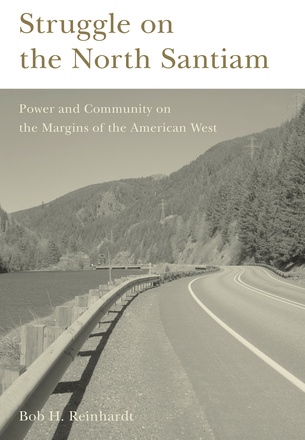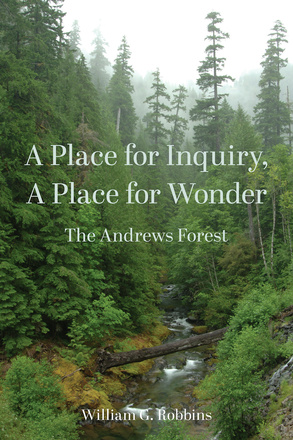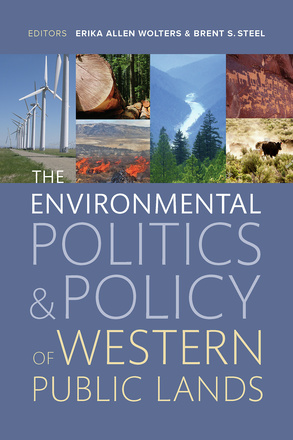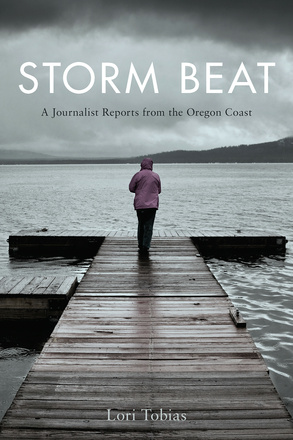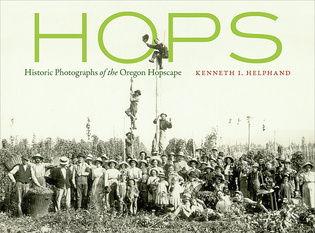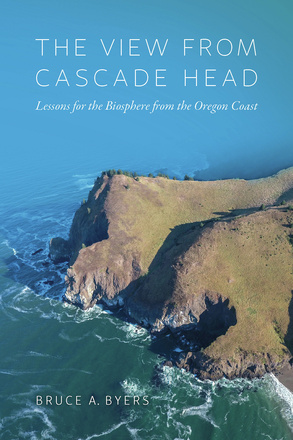Oregon State University Press
For fifty years, Oregon State University Press has been publishing exceptional books about the Pacific Northwest—its people and landscapes, its flora and fauna, its history and cultural heritage. The Press has played a vital role in the region’s literary life, providing readers with a better understanding of what it means to be an Oregonian. Today, Oregon State University Press publishes distinguished books in several academic areas from environmental history and natural resource management to indigenous studies.
Homing Instincts
Homing Instincts is a collection of personal essays that explores the ways we define “home” at different stages of our lives. Based on pivotal moments in the author’s life in New York City and Oregon, Homing Instincts bridges the gap between where we are and the stories we tell ourselves about where we think we belong.
Penguins in the Desert
Kaiaulu
Gathering Tides
All Coyote's Children
The Troubled Life of Peter Burnett
Oregon Pioneer and First Governor of California
Beginner's Luck
Dispatches from the Klamath Mountains
Words Marked by a Place
Local Histories in Central Oregon
Beyond the Rebel Girl
Women and the Industrial Workers of the World in the Pacific Northwest, 1905-1924
Sagebrush Collaboration
How Harney County Defeated the Takeover of the Malheur Wildlife Refuge
A Deadly Wind
The 1962 Columbus Day Storm
Ellie's Strand
Exploring the Edge of the Pacific
Grit and Ink
An Oregon Family’s Adventures in Newspapering, 1908–2018
Wild Migrations
Atlas of Wyoming's Ungulates
Giving Back
Research and Reciprocity in Indigenous Settings
Salmon is Everything
Community-Based Theatre in the Klamath Watershed
Governing Oregon
Continuity and Change
The Eclipse I Call Father
Essays on Absence
Same River Twice
The Politics of Dam Removal and River Restoration
Edge of Awe
Experiences of the Malheur-Steens Country
Northwest Voices
Language and Culture in the Pacific Northwest
The Red Coast
Radicalism and Anti-Radicalism in Southwest Washington
Interviewing
The Oregon Method
Field Guide to the Grasses of Oregon and Washington
Ricky in the City
Where the Wildlife Live
Catch and Release
An Oregon Life in Politics
Sporting Oregon
A Pictorial History of Early Oregon Sports
The Mountains of Paris
How Awe and Wonder Rewrote My Life
Persistent Callings
Seasons of Work and Identity on the Oregon Coast
A Generous Nature
Lives Transformed by Oregon
Listening at Lookout Creek
Nature in Spiritual Practice
The Other Oregon
People, Environment, and History East of the Cascades
Black Woman in Green
Gloria Brown and the Unmarked Trail to Forest Service Leadership
An urban African American woman rises from secretary to leader in the USDA Forest Service of the twentieth century West. Along the way, she faces personal and agency challenges to become the first black female forest supervisor in the United States.
Trees to Know in Oregon and Washington
For 70 years, people have turned to one book to learn about Northwest trees: Trees to Know in Oregon. This new edition, retitled Trees to Know in Oregon and Washington, expands its scope to cover more territory and include more trees.
The book was first published in 1950. Charles R. Ross, an Oregon State University Extension forester, wanted to introduce readers to the towering giants in their backyards. Since then, Edward C. Jensen has stewarded the publication through several more editions. This edition features several rare species native to southwest Oregon. It also updates scientific names and adds a new section on how Northwest forests are likely to be affected by changing climates.
Since its initial publication, Trees to Know has become a mainstay for students, gardeners, small woodland owners and visitors to the Pacific Northwest. Along with all the details on native conifers, broadleaves, and more than 50 ornamental trees, readers will find:
- More than 400 full-color photos and 70 maps depicting habitat, range and forest type.
- Easy-to-follow identification keys.
- Handy guides to help distinguish one variety from another.
- The story of Northwest forests — past, present and future.
Facing the World
Defense Spending and International Trade in the Pacific Northwest Since World War II
An examination of select federal and state-level politicians in the Pacific Northwest in the post-World War II era, "Facing the World" contends that individuals, including Henry Jackson, Tom Foley, Mark Hatfield, and Vic Atiyeh, working with local partners, secured the economic expansion of the Pacific Northwest through greater global outreach and embrace of the federal national security doctrine that took hold during the Cold War.
The Collected Poems of Ada Hastings Hedges
Ada Hastings Hedges was one of Oregon’s foremost poets of the mid-twentieth century. This book brings together her known poems, including a complete annotated reprint of her famous “Desert Poems” of 1930.
Collected Poems of Hazel Hall, The
During the short span of her career, Hazel Hall became one of the West's outstanding literary figures, a poet whose fierce, crystalline verse was frequently compared with that of Emily Dickinson. Confined to a wheelchair since childhood, Hall's writings convey the dark undertones of the lives of working women in the early twentieth century, while bringing into focus her own private, reclusive life—her limited mobility, her isolation and loneliness, and her gifts with needlework and words.
Abalone
The Remarkable History and Uncertain Future of California's Iconic Shellfish
Explores the natural history of the abalone and its imperiled future, focusing on a mix of issues, from the simple and expected (over-harvesting) to the more complex (fundamental scientific misunderstandings).
Struggle on the North Santiam
Power and Community on the Margins of the American West
A history or Oregon's North Santiam Canyon, from interaction between Native and non-Native peoples and railroad development and land fraud in the nineteenth century, to changing fortunes in the timber industry and questions about economic and environmental sustainability into the twenty-first century.
A Place for Inquiry, A Place for Wonder
The Andrews Forest
The H.J. Andrews Experimental Forest is a slice of classic Oregon: due east of Eugene in the Cascade Mountains, it comprises 15,800 acres of the Lookout Creek watershed. The landscape is steep, with hills and deep valleys and cold, fast-running streams. The densely forested landscape includes cedar, hemlock, and moss-draped Douglas fir trees. One of eighty-one USDA experimental forests, the Andrews is administered cooperatively by the US Forest Service, OSU, and the Willamette National Forest. While many Oregonians may think of the Andrews simply as a good place to hike, research on the forest has been internationally acclaimed, has influenced Forest management, and contributed to our understanding of healthy forests.
In A Place for Inquiry, A Place for Wonder, historian William Robbins turns his attention to the long-overlooked Andrews Forest and argues for its importance to environmental science and policy. From its founding in 1948, the experimental forest has been the site of wide-ranging research. Beginning with postwar studies on the conversion of old-growth timber to fast-growing young stands, research at the Andrews shifted in the next few decades to long-term ecosystem investigations that focus on climate, streamflow, water quality, vegetation succession, biogeochemical cycling, and effects of forest management. The Andrews has thus been at the center of a dramatic shift in federal timber practices from industrial, intensive forest management policies to strategies emphasizing biodiversity and healthy ecosystems.
The Environmental Politics and Policy of Western Public Lands
Editors Erika Allen Wolters and Brent Steel have assembled a stellar cast of scholars to consider long-standing issues and topics such as endangered species, land use, and water management while addressing more recent challenges to western public lands like renewable energy siting, fracking, Native American sovereignty, climate change, and land use rebellions.
Clifford Gleason
The Promise of Paint
Clifford Gleason: The Promise of Paint serves as both an introduction and a definitive study of an “artist’s artist,” who until now has not received the sustained attention that he and his work are due. It traces his career from the 1930s until the last months of his difficult life—difficult because of alcoholism, near poverty, and homosexuality in a repressive era. In paint, Gleason found the only realm in which he felt competent, confident, and successful; paint offered the promise of accomplishment. Published in conjunction with an exhibition at the Hallie Ford Museum of Art at Willamette University, this richly illustrated monograph examines Gleason’s identity as a modern artist as he responded to the rapid changes in artistic modernism from the late 1930s, when he studied with Louis Bunce at the Salem Federal Art Center, to the 1970s, when he rethought the legacy of Abstract Expressionism in works that are unique to him, visually beautiful and poetically expressive.
Storm Beat
A Journalist Reports from the Oregon Coast
Hops
Historic Photographs of the Oregon Hopscape
The craft brewing renaissance of recent decades has brought a renewed interest in hops. These vigorous vines, with their flavorful flowers, have long played a key role in beer making and in Oregon’s agricultural landscape. This compendium of photographs offers a visual dive into the distinctive physical presence of hops in the state. From pickers and poles to cones and oasts, Kenneth I. Helphand brings the landscape and culture of hops to life.
The View From Cascade Head
Lessons for the Biosphere from the Oregon Coast
This Is Not For You
An Activist's Journey of Resistance and Resilience
This Is Not For You tells the story of activist and photographer Richard Brown, a Black Portlander who has spent decades working to bridge the divide between police and the Black community. His memoir brings readers with him into the streets with fellow activists, into squad cars with the rank-and-file, and to regular meetings with mayors and police chiefs. There are very few people doing the kind of work Richard Brown has done. And that, as he sees it, is a big problem.
The book finds Brown approaching his eightieth birthday and reflecting on his life. As he recalls his childhood in 1940s Harlem, his radicalization in the newly desegregated Air Force, and his decades of activism in one of America’s whitest cities, he questions how much longer he’ll do this work, and he wonders who, if anyone, will take his place.
This is a book about how and why to become an engaged, activist citizen, and how activists can stay grounded, no matter how deeply they immerse themselves in the work. It also offers an intimate, firsthand look at policing: what policing is and could be, how civilians can have a say, and how police can and should be responsive to and inclusive of civilian voices. This Is Not For You speaks on every page about being Black in America: about Black pride; Black history, art, and culture; and the experience of resisting white supremacy. It also stands as a much-needed counternarrative to Portlandia, telling a different story about the city and who has shaped it.
Over fifty percent of royalties earned on this book will be donated to organizations working on behalf of Black Portlanders.
